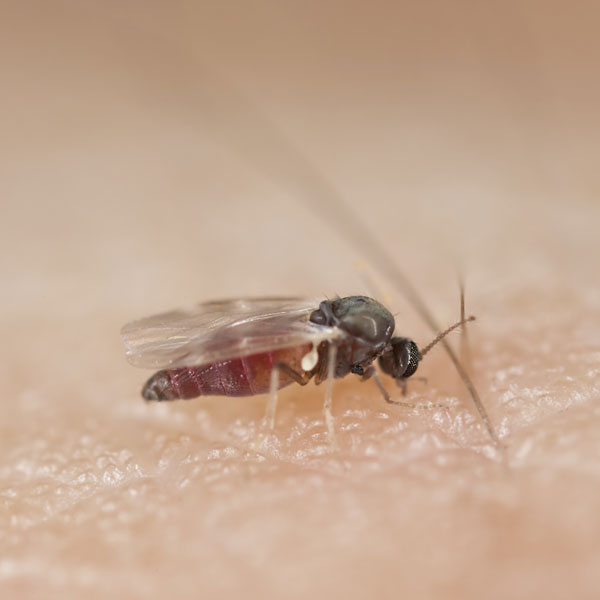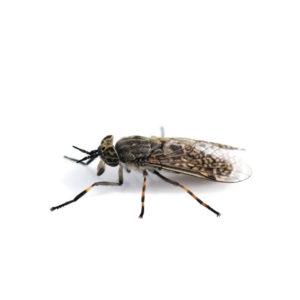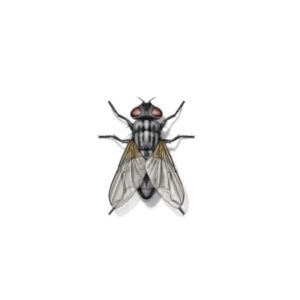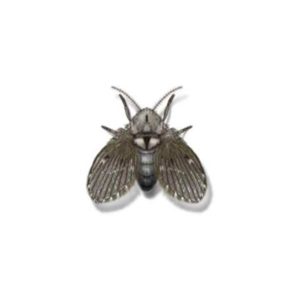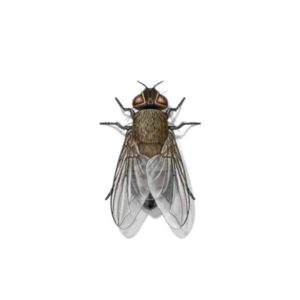Black flies are small, blood-sucking insects, found in many parts of the United States and Canada. Their presence is marked by their biting behavior, which can cause discomfort and, in some cases, transmit diseases to humans and animals. They are not just a mere nuisance but a significant concern for public health and comfort. Common names for this pest include buffalo gnats and turkey gnats, and they are known to fly around people’s heads, occasionally getting into eyes and ears, as well as crawling into the hair. Only the females are blood feeders and will readily bite humans and animals. Black flies may sometimes occur in enormous numbers in the late spring and early summer, particularly in the more northern latitudes.
These small, dark, biting insects are ubiquitous in various environments, especially near clean, fast-flowing water sources.Understanding the biology, identification, and control of black flies is crucial for effective management and prevention of their adverse effects. Unsure on the type of fly you are dealing with? Take a look at the most common flies found in North Carolina to help identify the specific fly species.
Black Fly Identification
What Do Black Flies Look Like?
Adult black flies are small, ranging from 2 to 5 mm in length, and are typically dark gray or black. Their distinctive humpbacked appearance, broad wings, and short antennae make them easily identifiable. The biting members of the population are the females, which require blood meals to support egg production.
Signs of a Black Fly Infestation
The presence of black fly swarms, especially near water bodies like streams and rivers, is a clear indication of an infestation. Additionally, the occurrence of bite marks on humans and animals, characterized by redness, swelling, and intense itchiness, signals their pervasive presence.
Habitat, Diet, Lifecycle & Bites
Where Do Black Flies Live?
Black flies breed exclusively in running water, and larvae and pupae develop in flowing, typically non-polluted water, with a high level of dissolved oxygen. The immature stages of black flies develop in oxygenated water sources, therefore adults are usually associated with slow-moving streams, creeks, or rivers where the immature stages develop. Black flies attach their larvae to rocks and vegetation beneath the surface. This preference for pristine aquatic environments means that any disruption in water quality can impact their populations.
Flowing water does not necessarily imply white water rapids, but water must be moving. Water in lakes and ponds that are not flowing is unsuitable for black fly development.
Diet of a Black Fly
The larvae of black flies feed on organic debris and microorganisms in the water, playing a critical role in the aquatic ecosystem. In contrast, adult females seek blood meals from humans, poultry, and livestock to facilitate egg production.
Life Cycle of a Black Fly
The life cycle of black flies is rapid and efficient, encompassing egg, larva, pupa, and adult stages. This cycle can be completed in just 2-3 weeks under optimal conditions, allowing for multiple generations to proliferate within a single season.
Black Fly Bites
Black flies can be annoying biting pests, but none are known to transmit diseases to humans in the U. S. The bites of black flies cause different reactions in humans, ranging from a small puncture wound where the original blood meal was taken to a swelling that can be the size of a golf ball. Reactions to black fly bites are collectively known as “black fly fever” and include headache, nausea, fever, and swollen lymph nodes in the neck. Bites from black flies can range from mildly irritating to severely allergic reactions, depending on the individual’s sensitivity. The bite sites often become red, swollen, and itchy, causing significant discomfort.
Are Black Flies Dangerous?
While not all black flies transmit diseases, certain species are vectors for pathogens such as Onchocerca volvulus, which causes river blindness in humans. Moreover, their bites can lead to secondary infections if not properly managed and treated. Besides being a nuisance to humans, black flies can pose a threat to livestock. They are capable of transmitting a number of different disease agents to livestock, including protozoa and nematode worms, none of which cause disease in humans.
How to Get Rid of Black Flies?
Controlling black flies requires an integrated approach that combines physical, chemical, and biological methods:
- Habitat Modification: Altering the aquatic environment to disrupt breeding sites can significantly reduce their numbers.
- Chemical Control: Targeted use of insecticides can offer temporary relief but must be applied with caution to avoid ecological damage.
- Physical Barriers: Utilizing fine mesh screens and fans can effectively keep black flies out of indoor spaces.
If you are dealing with a persistent black fly problem on your property, contact your local fly exterminators.
Black Fly Prevention Tips
Preventative measures are key in reducing the risk of black fly bites and infestations:
- Protective Clothing: Wearing long sleeves, pants, and hats can provide a physical barrier against bites.
- Insect Repellent: Applying repellents containing DEET can deter black flies from biting.
- Environmental Management: Reducing standing water and improving landscaping can minimize breeding sites on your property.
Need help with Black Flies control?
FAQs
What Do Black Flies Do to You?
Beyond the immediate discomfort of their bites, black flies can cause allergic reactions and, in some cases, transmit diseases, underscoring the importance of effective control and prevention measures.
What Keeps Black Flies Away?
Effective strategies include using insect repellent, wearing protective clothing, and avoiding areas with high black fly activity during peak times. Environmental modifications, such as managing water bodies to disrupt breeding, can also be effective.
How Long Does Black Fly Season Last?
The duration of the black fly season can vary significantly by location but generally spans from late spring to early summer. Environmental conditions, such as temperature and water flow, can extend or shorten the active period.

